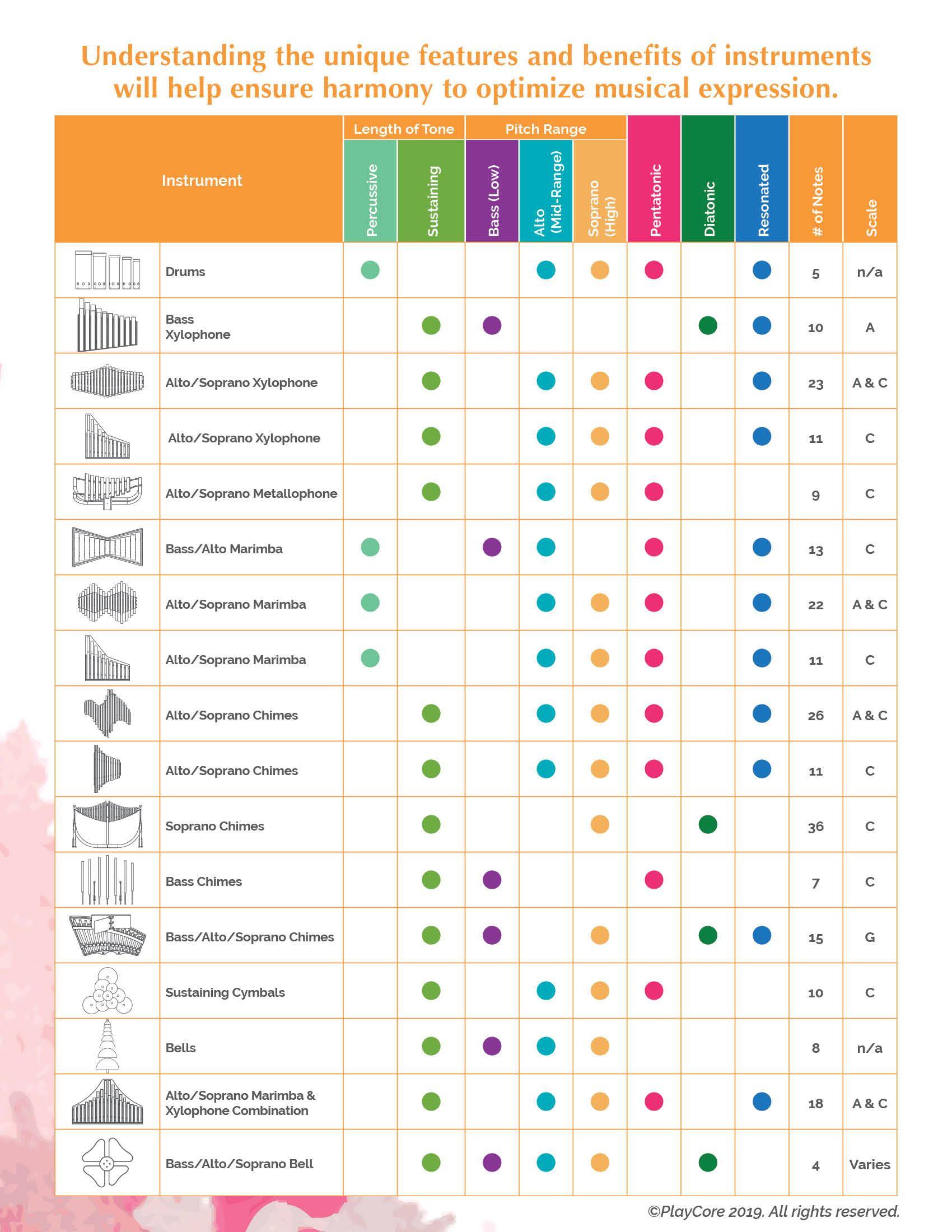For optimal musical expression, consider the size of your location and then select individual instruments based on their musical attributes and the ability to create harmony in that space. Knowing the tonal attributes of various outdoor instruments can help you get started and can guide your selection to ensure a good variety of musical sounds.
First, consider how long the sound lasts. Some instruments are percussive, like a drum, and therefore have a short length of tone, approximately one second. Others can be more sustaining, producing sounds that can last up to five or more seconds when struck, think of a wind chime. Both of these types of instruments can be successfully combined in a grouping to offer variety and interest.
Another sound quality to consider is the pitch range. This refers to tones that are low (bass),mid-range (alto), or high (soprano). Grouping the instruments in this way also helps to create more interest. Some instruments are resonated—using acoustical (not electronic) air cavities to produce a fuller reverberating sound—which creates a beautiful, long, sustaining sound that can be heard and felt.
Selecting instruments that are in the pentatonic scale allows the music park to sound beautiful and interesting. Pentatonic harmonies are gentle and soothing. They include a five-note music scale within one octave with no semitones. What that means is it's impossible to make any real harmonic mistakes, so even if you have no musical training, it sounds beautiful.
It's beneficial to choose instruments from various categories, such as bells, drums, chimes, xylophones, and marimbas. Each adds unique sounds, musical harmony, and helps to ensure a richness when in play. Within each category, there are a variety of options. Bells include cymbals in various pitches. Drums can come in several different sizes, heights, and tones. Chimes can include bass, soprano, and alto/soprano pitches. Xylophones, which resonate like a gong, are in the A or C scale and can offer ergonometric and accessible mallets to meet the diverse physical needs of users. Marimbas uniquely combine the features of a xylophone and a kalimba (also known as a thumb piano).
We can help make selecting the right instruments easy!
Download the image below to get an understanding of the features and benefits of each instrument to ensure harmony and optimize musical expression.

Learn more about blending outdoor music & community.
Request Natural Harmony to discover the benefits of music and planning tips on starting your first outdoor music park.








